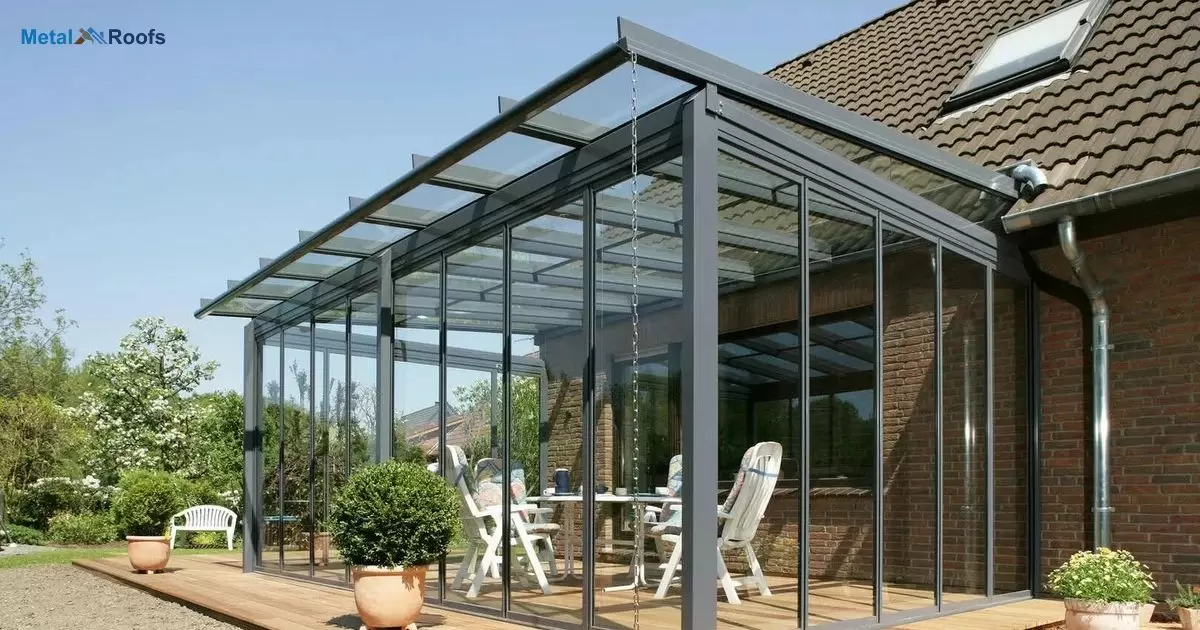Pergola is an outdoor shaded structure. Polycarbonate roof blocks rain, sun. Clear roof allows some light. Durable material withstands weather. Provides covered patio or walkway. Customizable colors and design styles. Enhances backyard living space.
Outdoor living just got better. Imagine relaxing under shade. Rain or shine, you’re covered. Polycarbonate pergola roof protects you. Still lets in natural light. Durable, weather-resistant material. Cus tomized for your style preferences.
Polycarbonate panels let in light. But keep out the rain and sun. Customizable colors enhance home’s style. Open yet covered living space. Weather-resistant and low upkeep. Adds value to your property. Perfect party or relaxation spot. Versatile for many backyard needs.
Key Takeaways
- Pergolas with polycarbonate roofs offer a blend of natural light and weather protection.
- Proper design and construction ensure durability and functionality.
- Regular maintenance, such as cleaning and inspections, ensures long-term performance.
- Polycarbonate roofing is a cost-effective and stylish option for outdoor structures.
- Consider factors like size, location, and local building codes when planning a pergola with a polycarbonate roof.
What Is A Pergola With A Polycarbonate Roof?
A pergola with a polycarbonate roof is an outdoor structure designed to provide shelter from the sun, rain, and other elements while allowing natural light to filter through. It typically consists of sturdy wooden posts and beams that support a roof made of polycarbonate sheets.
Clear roof panels for pergolas allow natural light to filter through while providing protection from the elements, making them ideal for gardens, patios, and outdoor seating areas.
Benefits Of A Pergola With A Roof
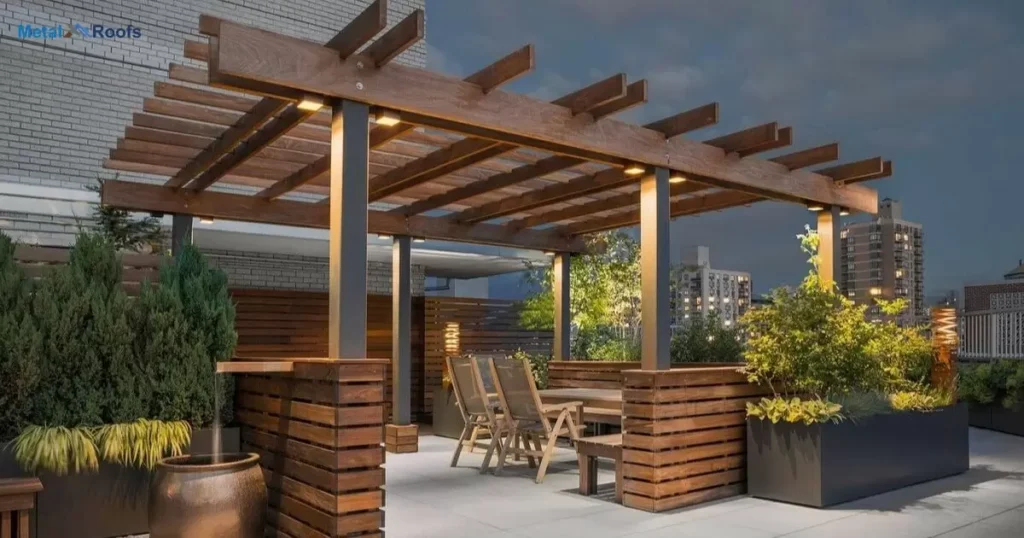
Here are five benefits of having a pergola with a roof:
Weather Protection: A roofed pergola provides shelter from rain, snow, and intense sunlight, allowing you to enjoy your outdoor space regardless of the weather conditions.
Extended Living Space: It effectively extends your usable living space outdoors, providing a designated area for relaxation, dining, or entertaining guests.
Increased Privacy: Depending on the roof design, it can offer enhanced privacy by blocking the view from above, creating a more intimate and secluded atmosphere.
Improved Comfort: The roof provides shade, keeping the area cooler and more comfortable during hot days, enabling you to spend more time outdoors.
Enhanced Property Value: A well-designed pergola with a roof can enhance the aesthetic appeal of your property, potentially increasing its market value.
Designing A Polycarbonate Roof
When designing a polycarbonate roof, start by planning the size and location of your structure. Consider sunlight, shade, and the landscape. Sketch your design with dimensions and choose the type of polycarbonate sheets.
Prepare the site by clearing the area and marking post locations. Dig post holes, install posts, and attach beams horizontally. Finally, measure and cut polycarbonate sheets to fit the roof area. Attach them to rafters, seal edges, and gaps with compatible sealant.
Materials For A Pergola
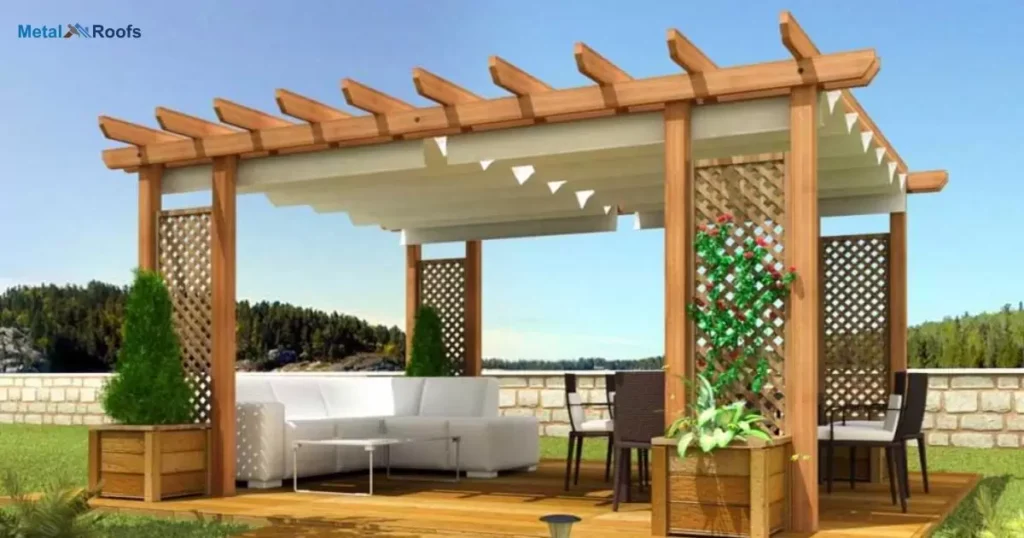
When choosing materials for a pergola, several options are available, each with its own advantages and aesthetic appeal. Here are some common materials used for building pergolas:
Wood:
Cedar: Known for its natural beauty, resistance to rot, and durability, cedar is a popular choice for pergolas. It has a rich color that ages gracefully over time.
Redwood: Similar to cedar, redwood is naturally resistant to decay and insects. It has a distinctive reddish hue and is prized for its strength and longevity.
Pressure-Treated Pine: Treated pine is a cost-effective option that offers decent durability when properly maintained. It can be stained or painted to achieve the desired look.
Metal:
Aluminum: Lightweight, rust-resistant, and low-maintenance, aluminum is a practical choice for pergolas. It can be powder-coated in various colors and is highly durable.
Steel: Steel pergolas are sturdy and can support heavy loads. They can be powder-coated for added protection against corrosion and come in different styles, including modern designs.
Vinyl:
- Vinyl pergolas are a low-maintenance option that resists rot, decay, and pests. They are easy to clean and come in various colors and styles. However, some may find vinyl less aesthetically appealing compared to natural materials like wood.
Fiberglass:
- Fiberglass pergolas offer the look of wood without the maintenance. They are lightweight, durable, and resistant to rot, insects, and weather damage. Fiberglass can mimic the appearance of various wood species.
Composite Materials:
- Composite materials, such as wood-plastic composites (WPC) or engineered wood products, combine wood fibers with plastic or resin. These materials are durable, low-maintenance, and resistant to rot, insects, and weathering. They can mimic the look of natural wood.
Bamboo:
- Bamboo is an eco-friendly option that adds a tropical or exotic vibe to a pergola. It is lightweight, sustainable, and resistant to moisture. However, it may require more frequent maintenance compared to other materials.
When selecting a material for your pergola, consider factors such as durability, maintenance requirements, aesthetics, budget, and how well the material complements your outdoor space’s overall design.
Installation Of A Pergola With A Polycarbonate Roof
- Design and plan the pergola layout.
- Gather materials and tools.
- Prepare the installation site.
- Assemble and install the pergola frame.
- Cut and attach polycarbonate roof panels securely.
- Seal joints and edges for waterproofing.
- Add finishing touches and conduct a final inspection.
- Maintain the pergola regularly for longevity.
Maintenance And Care Of A Polycarbonate Roof
Maintaining a polycarbonate roof is straightforward. Regularly clean it with mild soap and water to remove dirt. Inspect for cracks or damage and repair as needed. Additionally, trim nearby branches to prevent scratches and maintain the roof’s integrity.
For long-term care, apply a UV protective coating annually. This shields the polycarbonate from sun damage. Keep gutters clear of debris to ensure proper drainage. Lastly, check seals and fasteners for tightness to prevent leaks. Regular upkeep extends the lifespan of your polycarbonate roof.
Types Of Pergolas With A Polycarbonate Roof
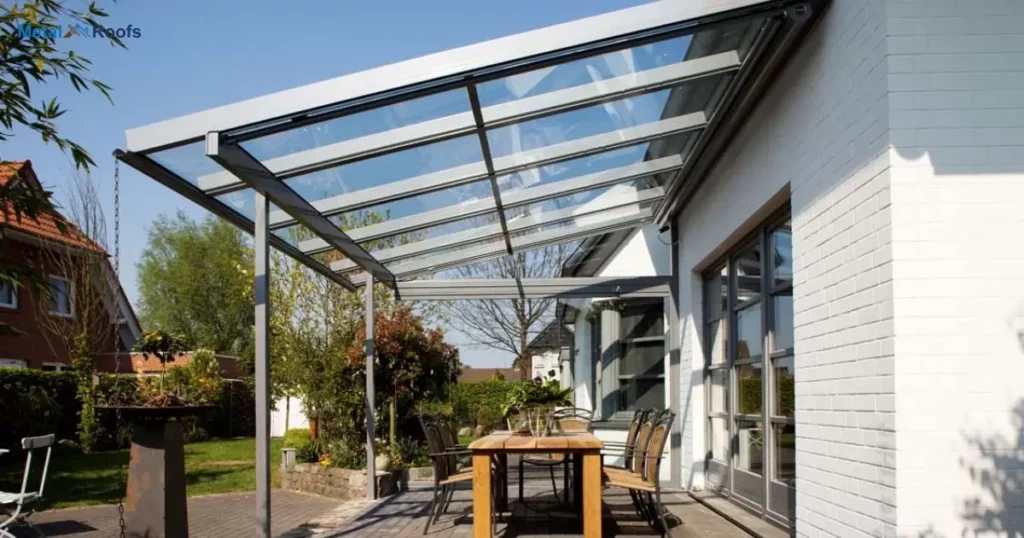
There are several types of pergolas with polycarbonate roofs, each offering unique benefits and aesthetics:
Flat Roof Pergola: A flat roof pergola with a polycarbonate cover provides a sleek and modern look. It offers good protection from the sun and rain while maintaining an open feel.
Gable Roof Pergola: This type of pergola features a peaked roof, similar to a house’s gable roof. Gable roof pergolas with polycarbonate panels provide excellent ventilation and a more traditional appearance.
Pitched Roof Pergola: A pitched roof pergola has a sloped roof that allows rainwater to run off easily. It provides good shade and can enhance the overall design of your outdoor space.
Retractable Roof Pergola: Some pergolas come with a retractable polycarbonate roof, allowing you to adjust the amount of sunlight and shade as needed. This type offers flexibility and convenience.
Arched Roof Pergola: Arched roof pergolas have a curved design, adding elegance and visual interest to your outdoor area. Polycarbonate arched roofs provide protection from the elements while creating a unique look.
Attached vs. Freestanding: Pergolas with polycarbonate roofs can be either attached to a structure (like a house) or freestanding in your yard. The choice depends on your space and design preferences.
Each type of pergola with a polycarbonate roof has its advantages, so consider factors such as aesthetics, climate, and functionality when choosing the right option for your outdoor space.
Cost Of A Pergola With A Polycarbonate Roof
| Item | Cost Range |
| Pressure-Treated Lumber for Frame | $150 – $500 |
| Polycarbonate Sheets | $150 – $1,000 |
| Labor (if hiring professionals) | $500 – $1,500 |
| Additional Features (e.g., lighting) | $50 – $500 |
| Total Cost (Estimated) | $300 – $3,000 |
Building a pergola with a polycarbonate roof can cost between $300 to $3,000 depending on the size, materials, and complexity. Pressure-treated lumber for the frame, along with polycarbonate sheets, are the main expenses.
The overall cost includes materials, labor if hiring professionals, and any additional features like lighting or decorative elements. It’s essential to plan and budget carefully to create a pergola that meets your needs and fits within your budget.
Case Studies Of Pergolas
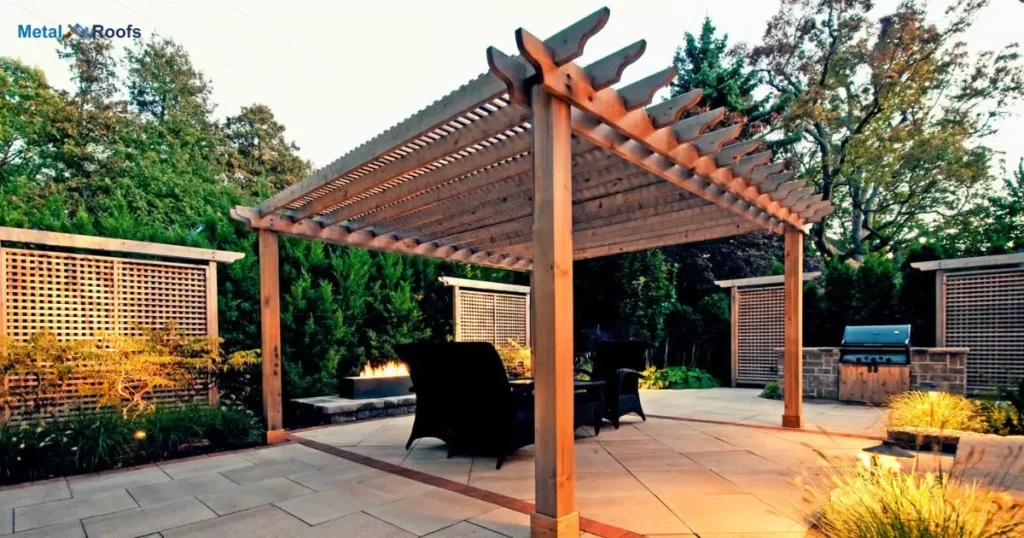
They offer protection from the elements while allowing natural light in. In one case study, a polycarbonate-roofed pergola transformed a backyard into an all-weather entertaining space.
Another case study highlights the durability of polycarbonate sheets. Even in harsh climates, such as coastal areas, these pergolas withstand rain and wind. This makes them a practical and stylish addition to any outdoor area, providing both functionality and aesthetic appeal.
Frequently Asked Questions
Can you put a polycarbonate roof on a pergola?
Yes, you can put a polycarbonate roof on a pergola for added protection from the sun and rain while still allowing natural light to filter through.
How thick should polycarbonate be for a pergola?
Polycarbonate for a pergola roof should typically be between 6mm to 16mm thick, depending on factors like climate and desired durability.
Is polycarbonate roofing worth it?
Yes, polycarbonate roofing is worth it due to its durability, weather resistance, and ability to provide natural light while protecting from the elements.
Conclusion
Pergola protects from elements. Light filters through polycarbonate. Outdoor entertaining made easy. Install for patio perfection. Extend your living space.
Colors enhance curb appeal. Durable, weather-resistant material. Low upkeep frees time. Valuable home upgrade completed. Backyard oasis is ready.
